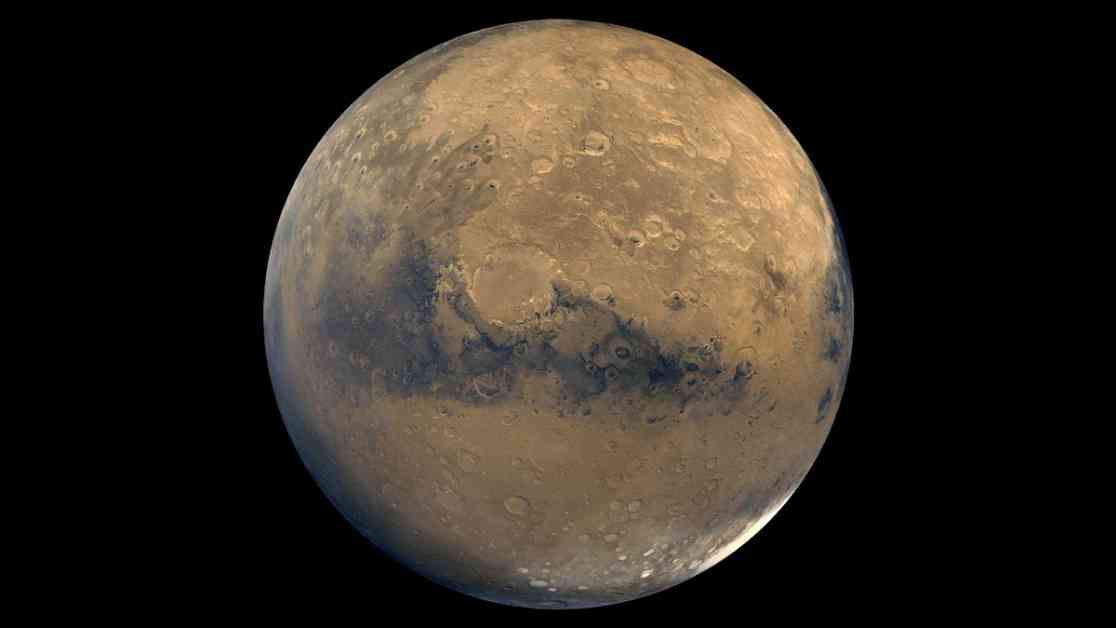Mars, one of the rocky planets in our solar system, has always intrigued scientists with its unique shape and extreme terrain. While Mars currently has two small moons, new research suggests that it may have once had a larger moon that played a significant role in shaping the planet’s landscape.
Astronomer Michael Efroimsky from the U.S. Naval Observatory in Washington, D.C. proposes that a lost moon, named Nerio, could explain Mars’ unusual features. This theory is based on the extreme terrain found on Mars, including the Tharsis bulge, the tallest mountain, and the largest canyon in the solar system.
Nerio’s significant mass would have influenced Mars’ shape and terrain through its gravitational pull, similar to how Earth’s moon affects our planet’s oceans. As Mars cooled, the tidal bulges caused by Nerio would have become locked into the planet’s form, resulting in the dramatic landscape we see today.
However, Nerio is no longer present, and Efroimsky suggests that it may have been destroyed in a collision, leaving behind the current moons, Phobos and Deimos. Alternatively, it could have been scattered out of the solar system due to gravitational interactions with other celestial bodies.
While the idea of a lost moon shaping Mars is fascinating, it remains a hypothesis that raises many questions. Efroimsky acknowledges that further research is needed to explore the formation and disappearance of Nerio, as well as the geological processes that may have continued to shape Mars after its departure.
As scientists continue to study the mysteries of Mars, the search for evidence of the lost moon Nerio will be ongoing. This research opens up new possibilities for understanding the Red Planet’s evolution and the role that celestial bodies have played in shaping our solar system.
In conclusion, the exploration of Mars and its moons continues to captivate scientists and space enthusiasts alike. The quest to uncover the secrets of our neighboring planet’s past is a testament to the endless curiosity and wonder of the human spirit. As we look to the stars, we are reminded of the vast mysteries that lie beyond our own planet and the endless possibilities that await us in the cosmos.












